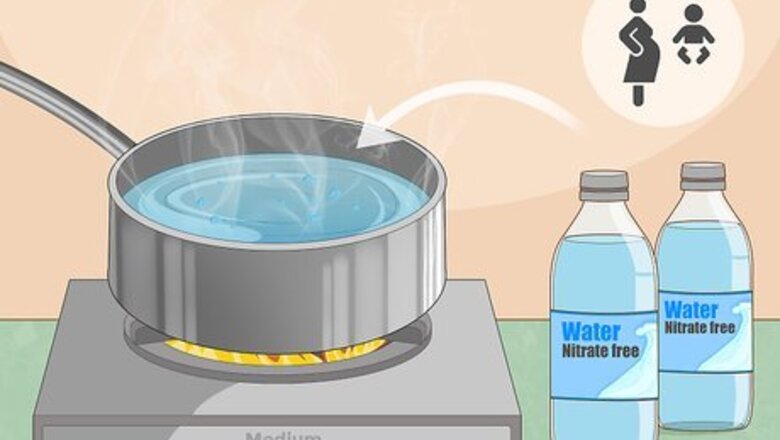
views
Taking Quick, Short-Term Measures
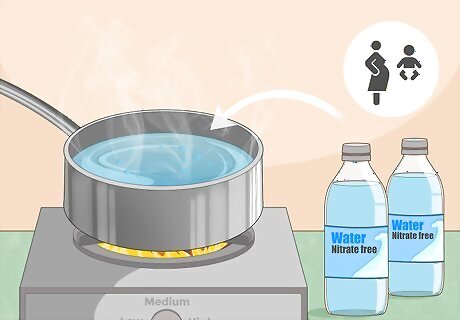
Use bottled drinking and cooking water for infants or pregnant people. There’s no clear evidence that high nitrate levels are a health risk for older children or adults. However, elevated nitrates are a clear danger for fetuses and infants under about 6 months of age. If you’re pregnant or are using water to mix formula for an infant, rely on bottled water if your home water supply has elevated nitrate levels. High nitrate levels can cause methemoglobinemia (sometimes called “blue baby syndrome”) in fetuses and infants. This condition essentially cuts off their oxygen supply from within and can be fatal, but thankfully it is reversible if treated promptly. Elevated nitrate levels are not transmitted through breast milk. To have your water tested for nitrates, contact a laboratory that has been certified by an appropriate government agency (such as the CDC or EPA in the U.S.). For reference, “high” nitrate levels can be defined variously as follows: 4 mg per kg of body weight per day; 45 mg per liter of water; 10 parts per million (ppm) of water.
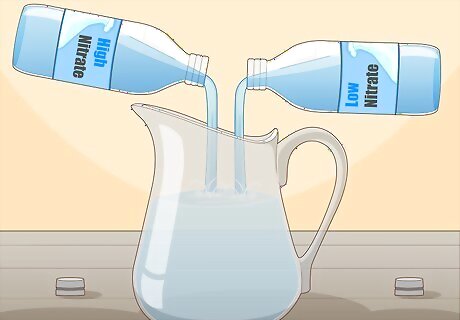
Dilute high-nitrate water with low-nitrate water for drinking and cooking. If relying strictly on bottled water for an infant or pregnant person is impractical or too expensive, you can instead cut down on the nitrate concentration by mixing your water supplies. By mixing high-nitrate and low-nitrate water, you can reduce the overall nitrate concentration to acceptable levels. For example, say your goal is to get below 10 ppm and your well water is at 19 ppm. If you mix together equal amounts of well water and distilled water (which will have practically zero nitrates), you'll end up below 10 ppm.
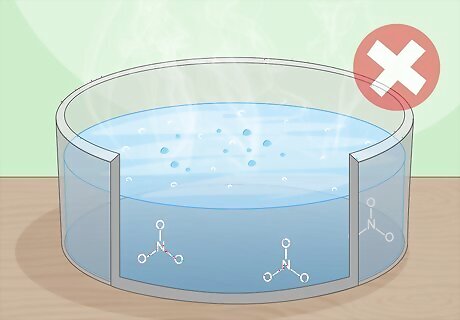
Do not try to remove nitrates by boiling the water. Nitrates aren’t a microorganism that you can kill off by boiling your water. In fact, boiling the water will only further concentrate the amount of nitrates in it, since some of the water will evaporate but all the nitrates will be left behind. If your water has a nitrate level at or near the max recommendation, and you need to boil it to remove other pathogens, dilute it with bottled or distilled water afterward.
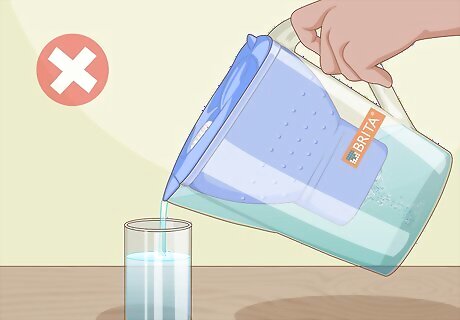
Skip basic home filters and chemical water treatments as well. Standard home water filters, such as brand names like Brita and Pur, do not remove nitrates from your water. Likewise, chemical water purification treatments, like adding chlorine or iodine, won’t do the job. Removing nitrates from water requires specialized filtration methods. That’s why, even if you have a home water filter, it’s important to have your water tested if it’s at risk for having elevated nitrates—for instance, because you use well water or live near a large farm or animal feed lot.
Choosing a Long-Term Filtration Option
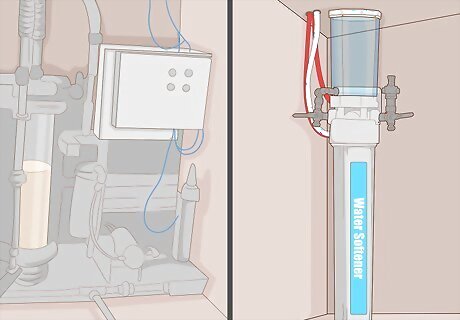
Have a pro set up an ion exchange unit and water softener. This type of unit sends high-nitrate water into a tank containing resin pellets that trade nitrate ions for chloride ions. The water is then piped to your faucet or whole home. The resin is recharged with chloride ions by an adjacent tank filled with sodium chloride brine. Ion exchange units look and work much like household water softener units, but they are uniquely designed to remove nitrates. You’ll have to regenerate the brine tank with sodium chloride on a regular schedule, as recommended by the manufacturer. This method also makes the “clean” water more corrosive, so you’ll need to use a water softener or other neutralization method as well.
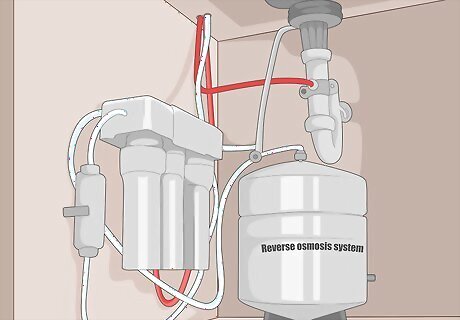
Get a professionally-installed reverse osmosis system. This method utilizes a pump to force the high-nitrate water at high pressure through a semi-permeable membrane. The membrane “catches” the nitrate ions and lets the water pass through on its way to your faucet or entire home. Reverse osmosis can remove 80-90% of nitrates from water, which means it may not reduce water with extremely high nitrates to a level below the recommended max. Reverse osmosis is slow and energy inefficient—only about 10% of the water makes it through the membrane, while the rest is discarded through wastewater piping. You’ll also have to replace the membrane on a regular schedule, as per the manufacturer’s recommendations.
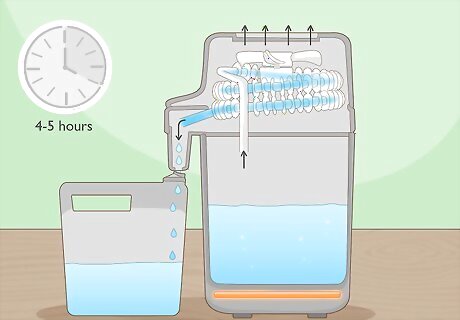
Distill nitrates from your water with a professional setup. While you can use low-tech methods to distill water in small amounts at home, you’ll need a professional system for large-scale water needs. Distillation involves boiling the water to kill pathogens and leave behind nitrates and other materials, then collecting, cooling, and condensing the steam into usable water. Unlike simply boiling water, in which case the nitrate-free steam is wasted, distillation collects this steam and turns it into nitrate-free water. Distillation is a slow process—it can take a home unit 4-5 hours to produce 1 US gal (3.8 l) of water. It also uses a great deal of energy and adds heat to your home.
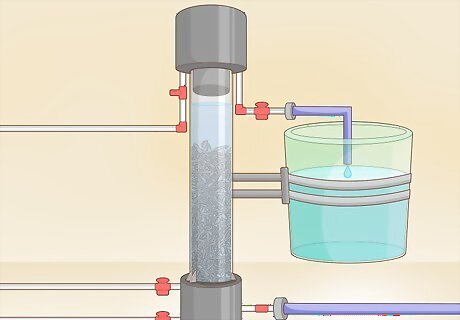
Look into emerging options like solid-phase denitrification. Due to the expansion of industrial agriculture, widespread use of fertilizers, and overwhelmed wastewater treatment systems, it’s increasingly common for water—especially well water or improperly treated municipal water—to have elevated nitrate levels. This has prompted efforts to find new methods for removing nitrates, such as solid-phase denitrification. Solid-phase denitrification uses a biodegradable polymer (such as wood chips or seaweed) as a carrier for microorganisms that essentially consume nitrates. While newer methods like this one carry a lot of promise, they may not be available, affordable, or practical where you live.
Cutting Nitrate Leaching into Well Water
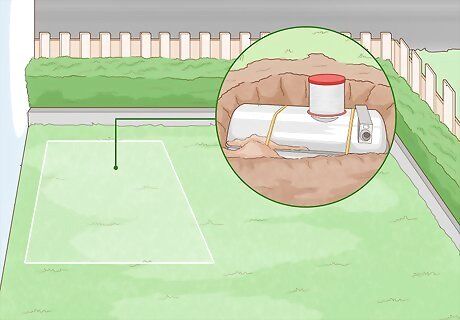
Repair or relocate your septic system, if applicable. Like any animal waste, human waste produces large amounts of nitrates. If you have a home septic system that’s overflowing, leaking, or is simply too close to your well, nitrates may be leaching into your well water. Have a professional empty your septic tank and check the system for any leaks or defects. If necessary, consider relocating either your septic system or your well.
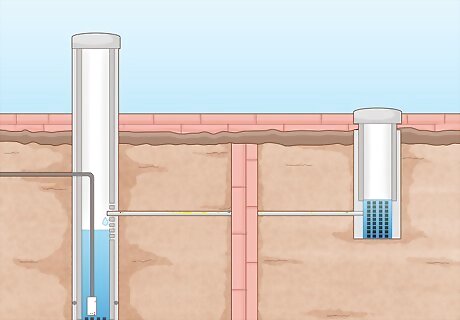
Set up barriers to keep surface water out of your well. It’s quite possible that the nitrates getting into your well are coming from surface water, not from groundwater. Check that there are no cracks or openings at the top of your well, and block or divert surface water from the area around your well. Create culverts or mounds to redirect surface water away from your well. This is especially important for runoff water from agriculture or livestock operations.
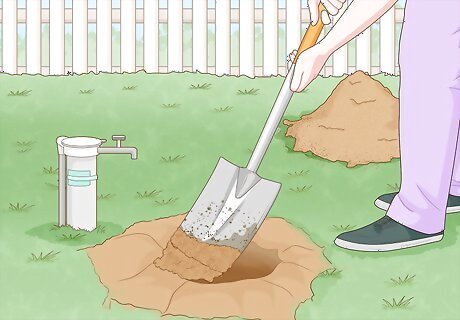
Deepen or relocate your well, if necessary. The deeper your well is, the less likely it is for high-nitrate surface water to reach your water supply. So long as the surface water doesn’t have a direct path to the bottom of your well, the elevated nitrate content should be filtered out naturally. In some cases, it may be more practical and cost-effective to drill a new well instead of deepening an existing one. You may, for instance, be able to relocate the well away from agricultural runoff. Deepening a well or drilling a new one is not cheap, unfortunately. Prices vary widely, but it can easily cost $5,000 USD or more to drill a new well.
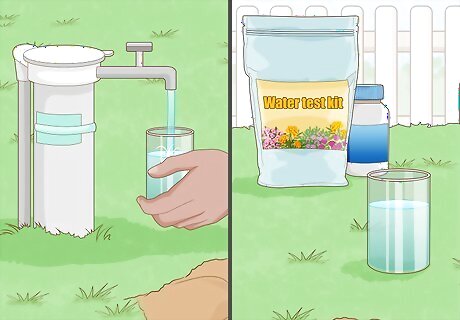
Have your well water tested professionally once per year. Nitrate levels can fluctuate due to a range of factors, so it’s important to have your well water tested on a regular basis. Most experts recommend annual testing, especially if you’ve ever had any issues with elevated nitrates or other contaminants. Utilize a water testing laboratory that is government-certified where you live. For instance, in the U.S., choose a lab that is certified by the EPA, CDC, or your state’s environmental, health, or natural resources agency.















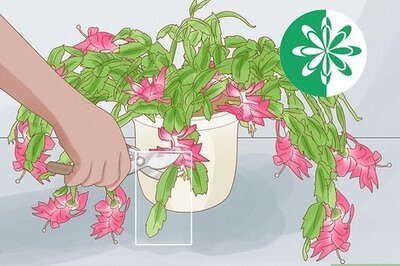




Comments
0 comment